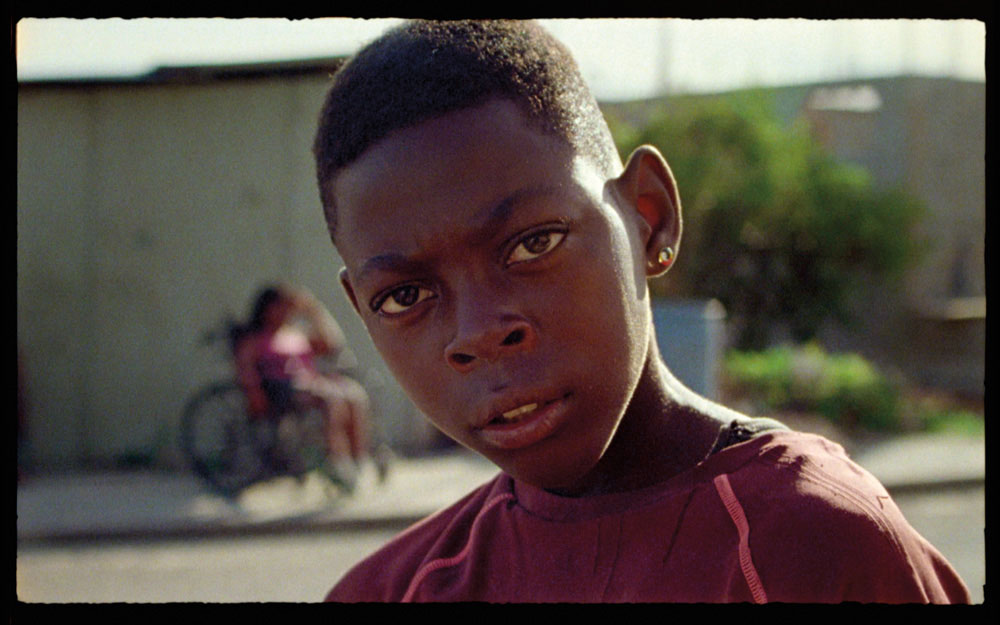“I would love to break down the way we’ve been taught to tell stories”
As a New York–based cinematographer, Antigua’s Shabier Kirchner has been making a name for himself shooting films for other filmmakers on the US indie scene. He’s worked on a number of acclaimed features, and last year the film-industry magazine Variety put him on its list of ten cinematographers to watch.
Recently, Kirchner got the opportunity to turn his camera on his homeland, in the service of telling his own cinematic story. Set in the neighbourhood of The Point, adjacent to Antigua and Barbuda’s capital St John’s, Dadli — the title is the familiar form of Wadadli, Antigua’s indigenous name — is an entrancing sensorial experience, an impressionistic assemblage of assorted shots of people, places, and things. One of the film’s subjects, the teenaged Tiquan, provides a poignant voiceover narration about life in The Point, and thus some semblance of a story.
Conventional storytelling isn’t the point, however: Dadli draws its power from the cumulative effect of its imagery, the camera capturing everyone and everything it sees with a piercing empathy. Jonathan Ali speaks to Kirchner about filming this almost accidental project.
How did Dadli come about?
I got hired as part of the second-unit team on this feature film, Wendy [by US director Benh Zeitlin]. We were shooting on film, and before we started I decided to refresh myself with the format. So I called my first AC [assistant camera] and we got ourselves a 16-mm camera and two cans of film and went to a village in Antigua called The Point. And I decided to document. I had no idea anything was going to come from that. It wasn’t until after Wendy that I revisited the footage.
What is it about The Point that made you shoot there?
The Point has an interesting history. It’s the last tenement yard system that exists in Antigua. It’s also one of the first villages where the slaves revolted — the slaves were made to live on top of their burial grounds. Today it’s one of the poorest areas, but it shares a port with cruise ships. So there’s this interesting duality between the history of the island and present-day tourism. Currently the government is bulldozing the area, turning it into commercial fisheries, so it was a great time to archive it.
How did Tiquan come to be the voice of the film?
While I was shooting this test footage, there was no agenda. I wasn’t looking for a main character. We weren’t recording sound, so there weren’t any interviews. I was just walking around shooting things that were interesting. It wasn’t until many months later that we realised there was this boy who kept appearing in the footage. So Tiquan became the force behind the narrative. After we had an idea of what we wanted the film to be, we tracked him down and interviewed him.
Dadli provides an impressionistic viewing experience rather than a conventionally told story. Does one form of filmmaking hold a particular appeal over the other for you?
In the not-so-exact words of [French filmmaker] Robert Bresson, there are two types of cinema: the type that employs plot and narrative to drive the story, and the type that employs the camera to do so. I’ve always been attracted to the latter. This project in particular was purely the camera.
Having made Dadli, are you planning on making more of your own films in the Caribbean?
It’s all I think about, really. I would love to break down the way we’ve been taught to tell stories. The Caribbean is so full of untold narratives, I would love to share as many as I can with the world. My production company, Rathaus, has optioned a book by a Caribbean author that is currently in development.
Dadli
Directors: Shabier Kirchner and Elise Tyler
Antigua and Barbuda
14 minutes


















